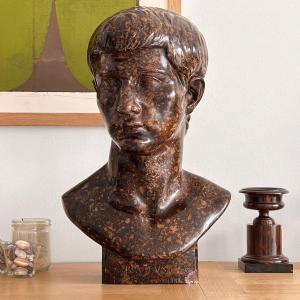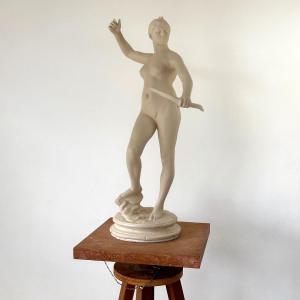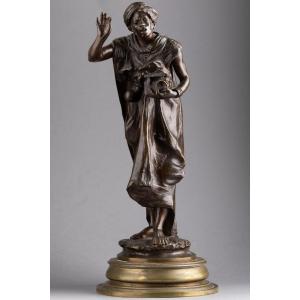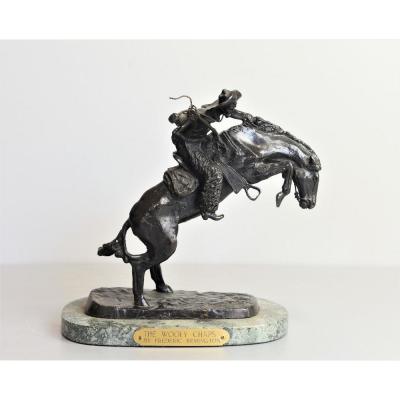This scene is inspired by the novel Les Travailleurs de la mer by Victor Hugo, published in 1866 during the writer's exile in Guernsey. In the book, Hugo describes the moment when Gilliatt fights the sea creature: "Gilliatt had plunged his arm into the darkness. Suddenly, he felt a hold. Something thin, rough, flat, icy, slimy and alive had wrapped itself around his arm. The beast had seized him... Gilliatt straightened up, the anguish, at its peak, was mute" (VH). Carlier captures here the beginning of the drama, drawing his inspiration from the ancient Laocoön, notably in the posture of the Trojan priest and his powerfully deployed torso. With his muscles tensed in the effort and his limbs outstretched, the hero struggles to free himself from the animal's grip, replacing the mythological serpent with the octopus. The swirling composition and athletic musculature of the character allow us to appreciate the sculptor's remarkable anatomical study. The first plaster of this work was presented at the Salon of 1879. The State immediately acquired it, and the artist's hometown of Cambrai commissioned a bronze, cast by Alexis Rudier. Ten years later, Carlier presented a marble version of high quality, which took the sculptor two years to execute "without recourse to a practitioner". This group was exhibited at the Musée des Artistes Vivants (now the Musée du Luxembourg) before joining the collections of the Musée des Beaux-Arts in Lyon, where it is currently kept.
Our copy is signed "E-JH Carlier" and dated 1904.
The mark "Alexis Rudier Fondeur Paris" is inscribed on the terrace.
This is a font made during the artist's lifetime.


















































 Le Magazine de PROANTIC
Le Magazine de PROANTIC TRÉSORS Magazine
TRÉSORS Magazine Rivista Artiquariato
Rivista Artiquariato